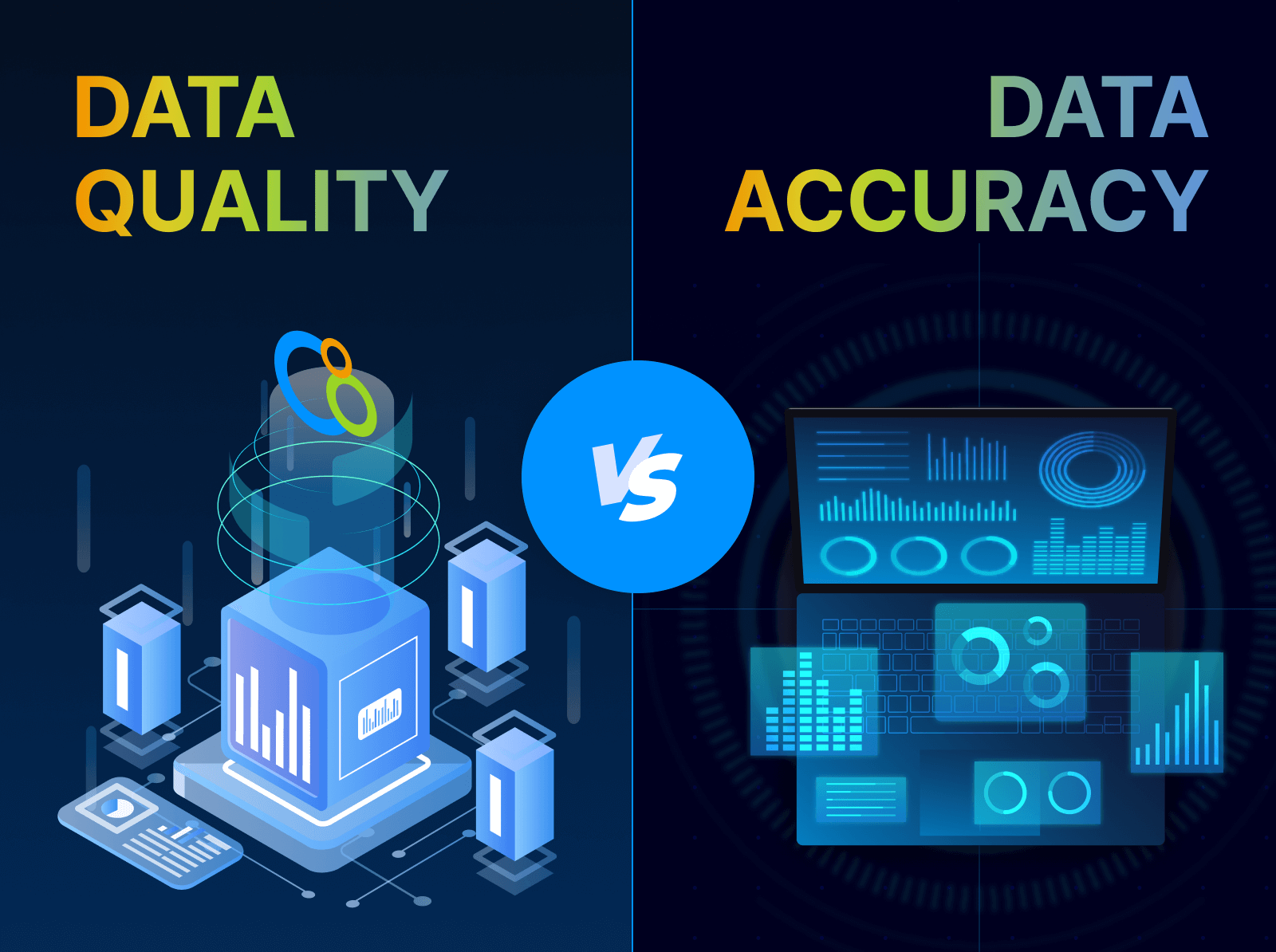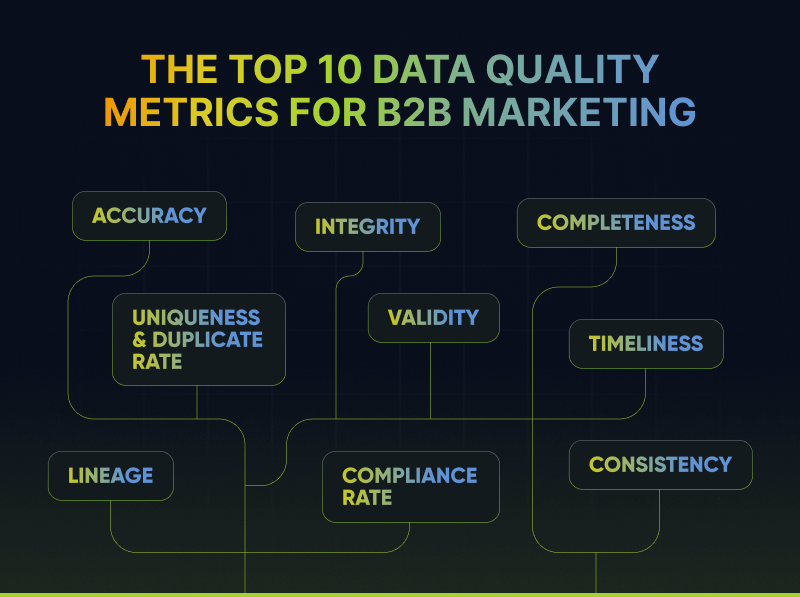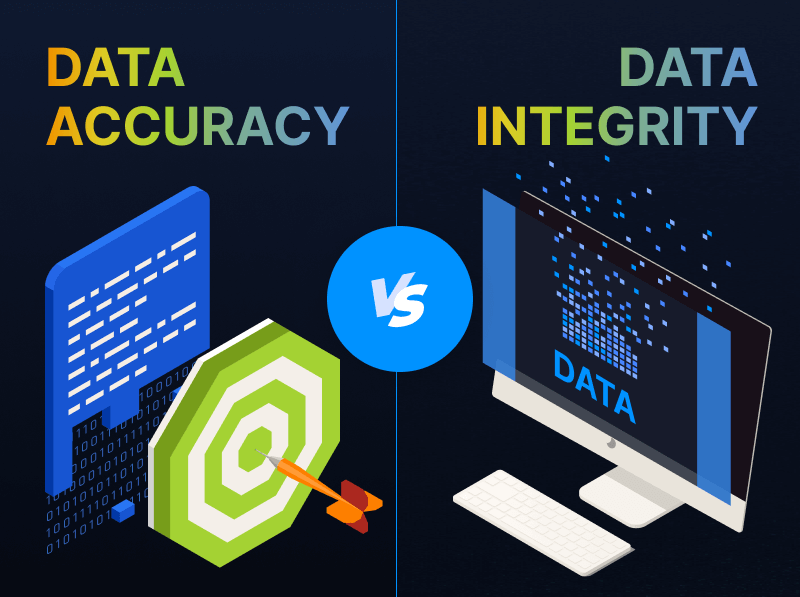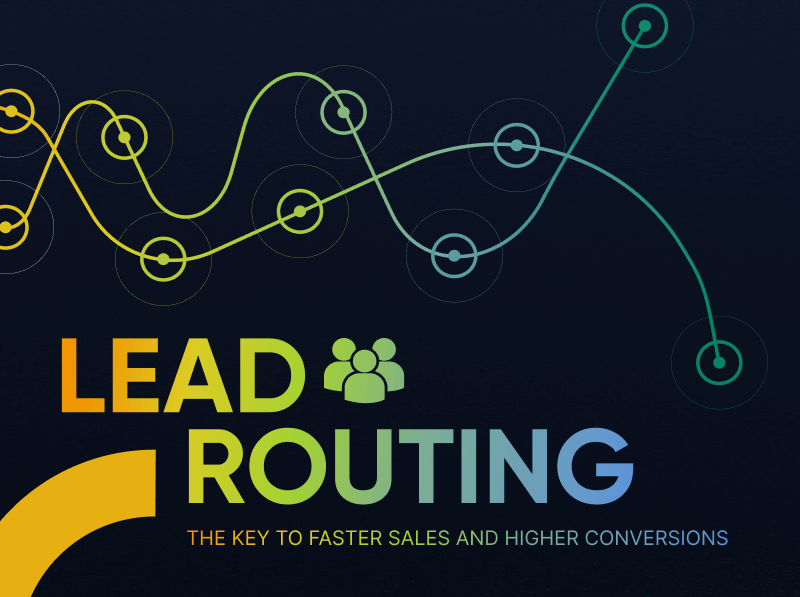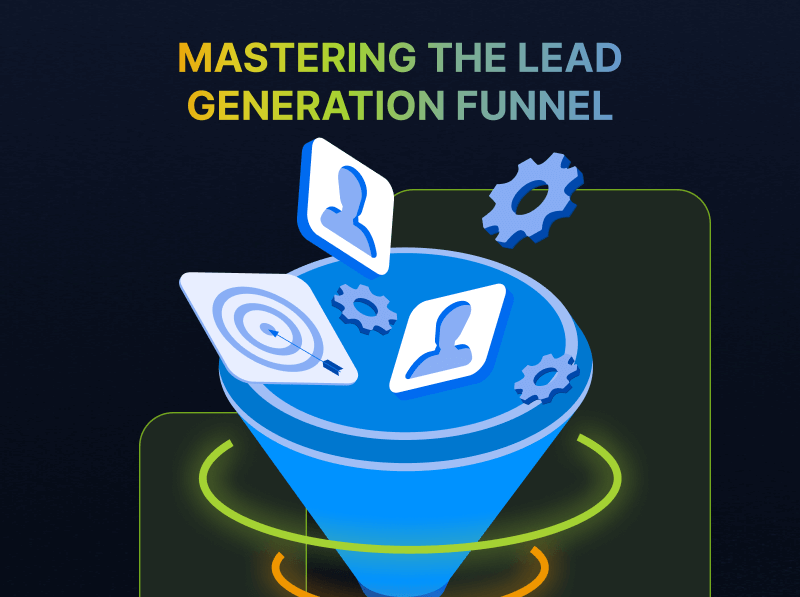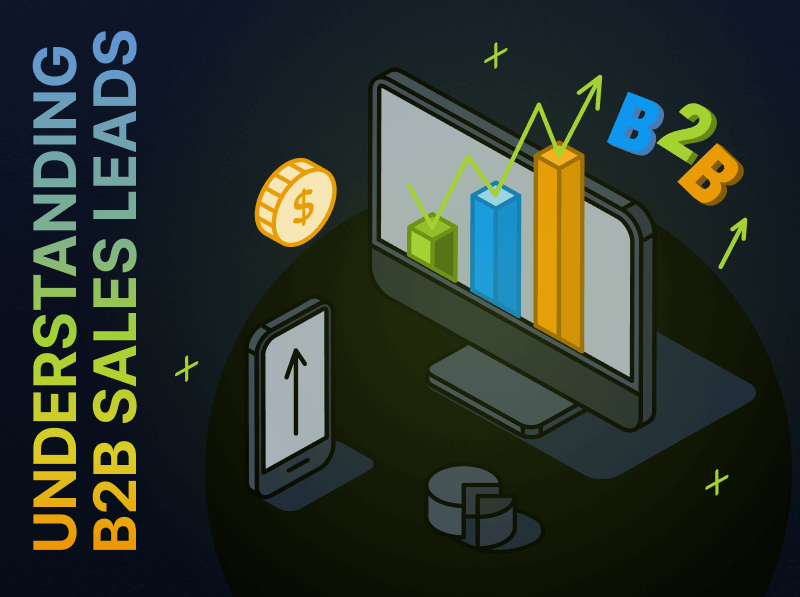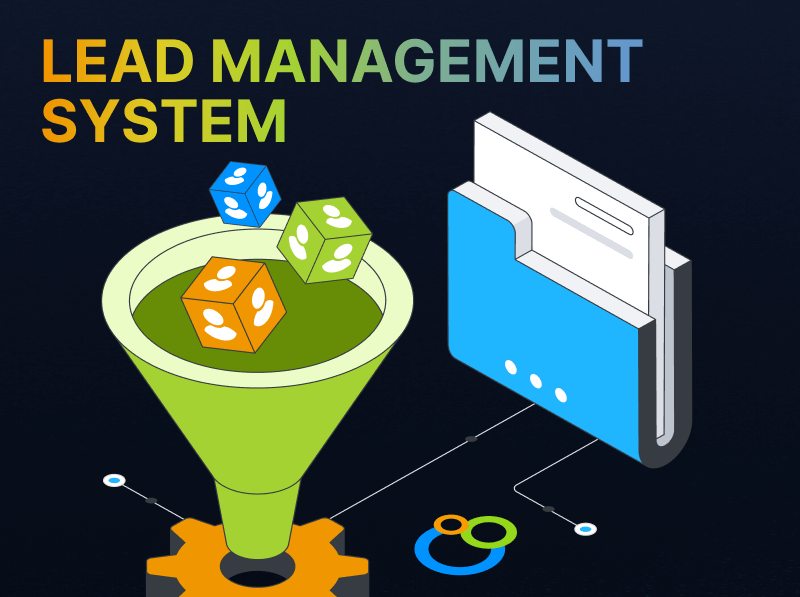Lead validation process: Everything you need to know
Highlights
- Lead validation turns unfiltered lead data into a reliable, high-converting pipeline.
- Clean, validated leads strengthen marketing ROI and restore sales confidence.
- Shared validation criteria align marketing and sales around what “qualified” really means.
- Automation makes it possible to validate thousands of leads at scale without sacrificing accuracy.
As a marketer, you work hard for your leads. Yet despite the time, effort, and money you put into finding them, you keep hearing the same response from the sales team:
“Your leads aren’t converting.”
They may even blame you if they miss their quotas, and you sense a growing skepticism from reps.
The truth is, you may have plenty of great leads for them. But if those leads aren’t consistently great, you’ll face the same problems: low conversion rates, sales skepticism, and wasted marketing spend.
Lead validation is the solution to poor lead quality—and it’s the key to ensuring every lead you pass to sales is real, relevant, and ready to buy.
What is lead validation?
Lead validation is the initial process of vetting potential customers, or leads, that your company receives, making sure those leads are:
- Complete
- Accurate
- Compliant
- Correctly formatted
- Unique
Think of lead validation as a subset of data validation. You’re doing most of the same things, but to a specific data type: leads.
Let’s say you’re pulling in leads from a webinar. You required registration for the webinar, so now you have little buckets of contact information on a thousand attendees.
But not every bucket is worth keeping. Some are duplicates, belonging to leads and customers already in your MAP or CRM. Others may be incomplete, fake, created with burner accounts, or obvious bad fits for your product or service.
Lead validation churns through those leads, getting rid of all the bad ones and leaving you with only valid leads. It’s different from lead generation (pulling in the leads—the webinar in the example above), and goes deeper than lead verification (checking data accuracy).
Businesses benefit from effective validation because it separates real opportunities from fake, duplicate, or unqualified leads. Sales and marketing teams can then focus on good-fit leads and stop wasting time on new leads that will never convert.
Why lead validation matters for marketers
Every invalid lead carries a cost, and wasted resources dilute campaign performance and misrepresent success. Incomplete or inaccurate data inflates metrics, misguides targeting, and hides where spend is truly working.
For enterprise marketers, the stakes are even higher. B2B buying journeys can be complex, and skipping lead validation introduces noise into the pipeline and creates trouble downstream: wasted budget, skewed attribution, slow revenue growth, and less trust in leads from the marketing team.
When sales teams lose confidence in marketing’s data, alignment breaks down. Lead validation restores that confidence.
The lead validation process
A strong lead validation process transforms raw inbound data into a clean, sales-ready pipeline. At a high level, the process follows key stages (which we’ll detail in the sections below):
- Ingestion and verification: Data from lead generation efforts comes into the system and software automatically checks that data is legitimate.
- Validation rules: Data runs through a customizable ruleset, eliminating bad-fit leads.
- Scoring and review: Automatically or manually further refine and prioritize validated leads.
- Routing: Send validated leads to the appropriate destination (e.g., specialized sales teams).
Step 1: Data capture and initial screening
Lead validation begins where lead generation ends—when raw data first enters your system. Across channels like events, content syndication, paid search, and social, every interaction adds new contacts to your database. But lead gen alone doesn’t qualify or check that data beyond the basics.
The first part of the lead validation process is cleaning up that data. Automated software checks can screen out obvious errors, like fake email addresses and phone numbers or incomplete entries.
Step 2: Applying validation rules
Validation rules go beyond basic screening, further filtering out leads that are legitimate but not good fits. There are a few approaches to validation rules:
- Demographic: Group attributes at the individual level. If your ideal customer profile (ICP) is senior managers on up, validation rules should segment out leads with lower-ranking job titles.
- Firmographic: Demographics, but at the business level. If you market only to 10,000+ employee businesses, validation rules should segment out leads from the SMB market.
- Behavioral: Actions taken by the user. You might execute a marketing strategy only for users who attended a specific webinar or downloaded a specific PDF.
Step 3: Human review or automated scoring
This stage sharpens your lead pool by prioritizing the most relevant, high-converting prospects. Teams can apply additional criteria with manual human review or through automated lead scoring models powered by AI.
If your additional criteria are data-based (quantitative), automation is usually sufficient. If you’re relying on qualitative factors, human review may make more sense, although AI-driven tools are making significant progress at correctly interpreting sentiment and other qualitative data.
Step 4: Passing leads to sales
The final step ensures verified leads reach the right hands quickly and with full context. A clean handoff keeps momentum in the pipeline and strengthens alignment between marketing and sales, reducing frustration for both parties and boosting the sales team’s confidence in lead quality.
Specifics will vary depending on the CRM or MAP you use, but in every case communication is the key. Especially if you’re changing the way you qualify and validate leads, make sure to communicate to sales what will be different (and better) about the leads they receive.
Benefits of a strong lead validation process
Lead validation is a powerful way to build trust between marketing and sales. It’s also a strategic way to improve the effectiveness and efficiency of both units. Reporting accuracy and ROI visibility also get a boost because they’re based on trustworthy data, not inflated counts.
Let’s look at the most significant measurable outcomes made possible by improving your lead validation process.
Higher lead quality and better conversion rates
It’s easy for marketers to focus on quantity: big numbers look great on charts and graphs and landing pages, right?
But later on in sales, customer success, and similar departments, quantity doesn’t impress anyone. Quality does.
In other words, bad data is hurting your business. Making the big number smaller (culling bad leads and leaving only high-quality leads) actually improves outcomes for everyone.
A better lead validation process means getting rid of more of the throwaways (the leads that were never going to convert). When sales reps don’t have to waste time on lost-cause leads, team members can focus all their efforts on the warmest leads. Conversion rates and efficiency go up, even when the total number of leads goes down.
Less waste from marketing spend
Lead validation keeps your budget focused on the right audiences. When bad data shapes targeting, campaigns drift off course, waste spend on the wrong buyers, and inflate results that don’t reflect reality.
It’s like running an ad for enterprise software during a kids’ cartoon: the message might land, but not with anyone who matters.
Cleaning up your leads before they influence future marketing campaigns helps you tighten and focus your marketing spend, giving you greater ROI.
Better sales and marketing alignment
When leads miss the mark, frustration builds for sales and marketing team members. Lead validation helps close that gap by giving both teams a single source of truth about lead quality.
With clear, agreed-upon validation criteria, marketing knows what to deliver and sales knows what to expect. The result is less finger-pointing, faster follow-up, and stronger conversion rates powered by mutual trust in the data.
Best practices for implementing lead validation
These best practices can help your team scale efficiently while maintaining the data quality that affects your bottom line.
Standardize lead data across channels
By default, lead generation channels won’t all look the same. They all collect similar data, but formatting and specifics will differ. But for effective lead validation, you need all this data to be consistent.
Where possible, adjust lead capture so that your data comes in cleaner. You can also use field-mapping templates for your less standard channels, moving and reformatting certain fields automatically.
Automate where possible
Manual validation processes typically don’t scale well, leading to bottlenecks that hamper growth. Instead, automate where possible. Automation tools can help solve questions of scalability. They operate quickly, helping marketers speed up validation at scale—without losing quality.
Automation is most effective and easiest in data-heavy situations, like format checks, deduplication, and moving information around. In fact, it’s often better than humans at these kinds of tasks because it doesn’t make typing errors or visually misread numbers.
Not every task can be automated, but you may find that modern tools can do more than you expect. Consider experimenting with a small sample or in a sandbox to see how well advanced automations fare compared to manual reviews.
Align validation criteria with sales
Who gets to decide which leads are truly valid: sales or marketing?
The right answer is both. Both departments have something unique to offer, so collaborate on building validation criteria. Take input from both marketing and sales so that validated leads do the most good, meeting the real-world expectations of sales team members and the metrics and goals of the marketing group. But be mindful of setting overly strict rules: You don’t want to delete good leads along with the bad ones.
How Integrate helps marketers validate leads at scale
Integrate brings lead management and data governance into a unified platform. This platform automates checks across numerous data sources, knocking out duplicates, invalid emails, missing fields, and more in real time.
With Integrate, marketers save time by spending less time on manual validation processes (and bad leads). Clarity on ROI and attribution come standard thanks to clean data that helps you understand, validate, and segment leads.
Integrate is the partner enterprise organizations trust to make sure only qualified leads reach sales. Our platform also handles data governance, keeping you compliant and secure as you execute marketing efforts at scale.
Explore Integrate’s data governance features.
Put lead validation to work for you
Is lead validation the missing piece to your marketing strategy? Done right, lead validation helps marketing teams and organizations save money, improve ROI, and build trust with sales. Sales teams also benefit through streamlined sales processes and better conversion rates.
More than just a small improvement to your marketing approach, lead validation is a strategic safeguard for pipeline health that can cause positive ripples throughout your organization.
Integrate provides integrated lead management built for the enterprise. Our tools can help you validate leads, more accurately and at scale. With Integrate, you’ll gain true data-driven confidence that your marketing investments will pay off.
Ready to experience a better way to validate leads? Request your Integrate demo now.


